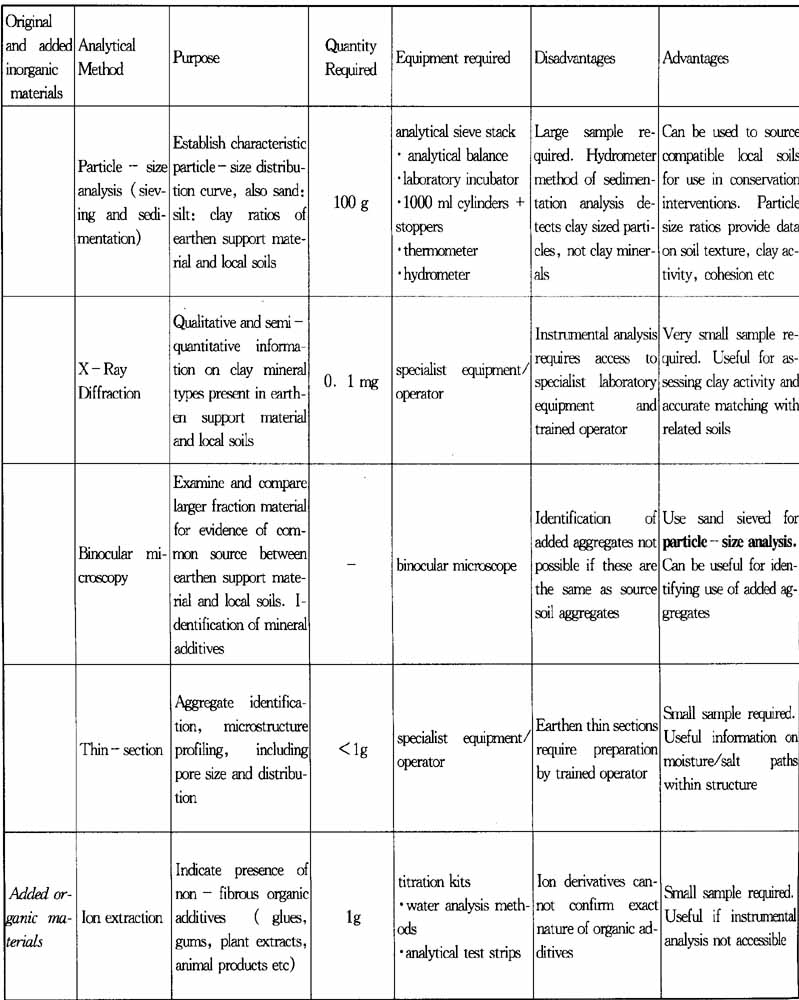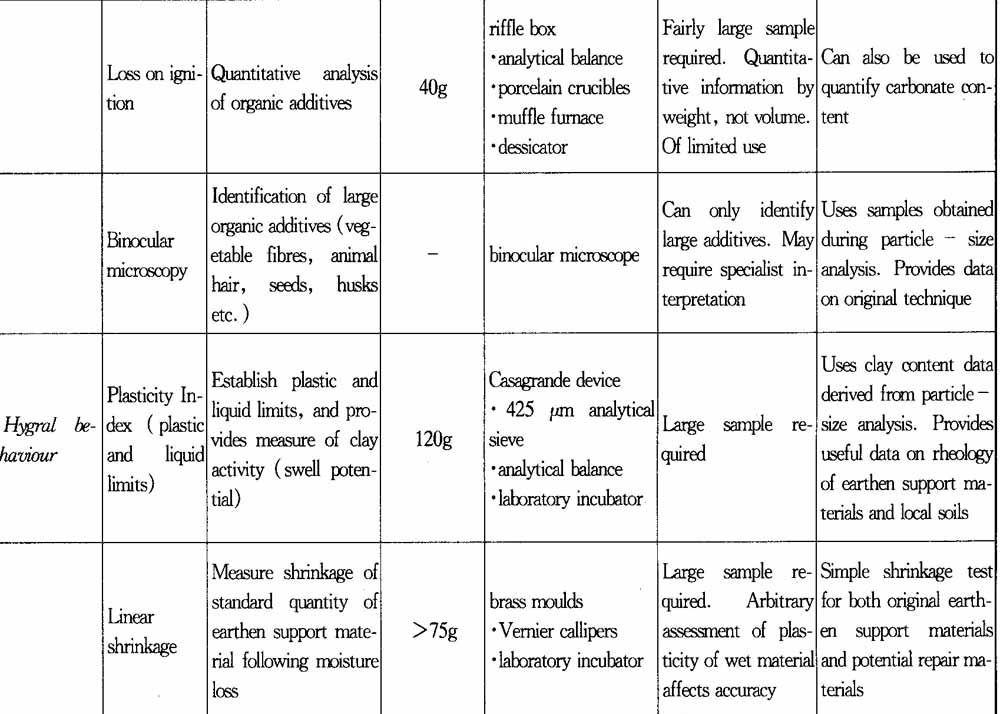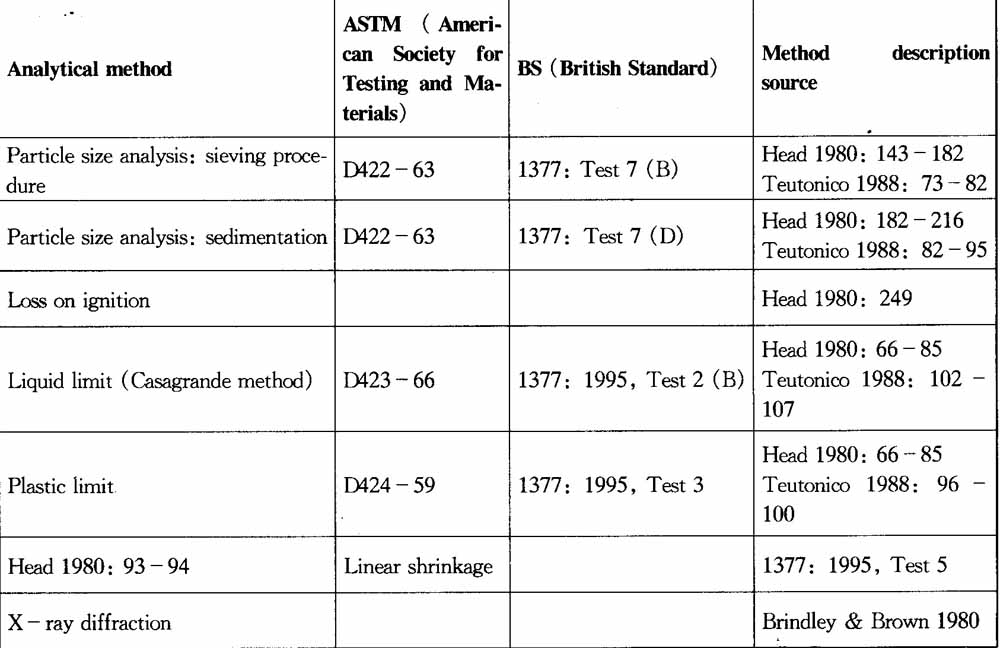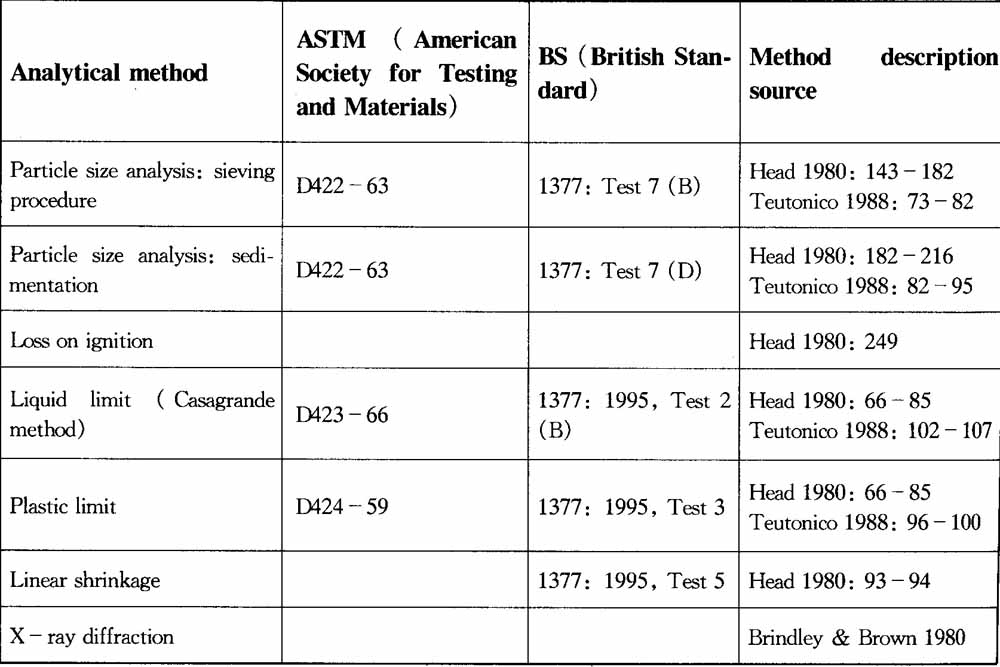您现在的位置:首页 > 研究论著 > 唐墓壁画国际学术研讨会论文集
The role of analysis in the conservation of wall paintings on earthen supports
Lisa shekede
Introduction
No place on earth has a wall painting heritage to rival eitherthe quantity or quality of that produced by China's millennia of civilisation. Paintings in tombs, temples,palaces, grotto sites and cliff - statue sites cover thousands of square meters, andtheir deterioration poses immense problems. The invasive activities of foreign ar-chaeological missions, and turbulent political events of the twentieth century have resulted in damage, theft and loss. Modernisation too has had a largely adverse im-pact. New problems, including urban encroachment onto ancient sites, desertifiea-tion, flooding, and pollution have accompanied economic development All these fac-tors amount to a conservation emergency. The response in the past five decades hasbeen both courageous and energetic, but in common with conservation efforts worldwide this has led to many remedial interventions which, with hindsight, have only compounded problems.Prime among these measures is the detachment and transfer of wall paintings. This practice raises a broad range of ethical issues due to its permanently damaging im-pact [Zheng, this volume]. Further problems, however, only become manifest at alater stage [ Rickerby, this volume]. At the Dunhuang Academy - which has al-most sixty years of conservation experience at the Mogao Grottoes - respect for the integrity of the site has been the starting point for alternative approaches. Since the1980s, resources have been channelled into analytical and research facilities to fur-ther the aim of preserving the paintings in their original location [Fan 1993: 1222]. Its involvement with the 'China Principles' - a set of guiding conservationprinciples developed by the State Administration for Cultural Heritage in China(SACH), the Getty Conservation Institute (GCI), and the Australian HeritageCommission - has also been pivotal in promoting in - situ conservation. ① These principles are being put into practice in the conservation of Cave 85, a collaborative project of the Dunhuang Academy, operating under SACH, and the GCI [seePiquē, this volume]. One of the project's main objectives is to establish a model process for wall painting conservation in China.
A key principle of the 'China Principles' is that diagnostic investigations should precede and inform remedial interventions. These should include studies into the nature of original and added materials. These are necessary to interpret deteriora-tion processes and to determine appropriate treatment methodology. The technical-ly complex nature of China's wall paintings makes this approach essential. Conser-vation materials and techniques adopted in the West for the treatment of paintings
on lime plaster are typically inappropriate for the treatment of Chinese wall paint-ings, the majority of which are on earthen supports. These initial investigations should therefore be the starting point for developing technologically appropriate con-servation interventions. Relatively simple methods of scientific analysis can be used to achieve this aim.The case for earthen materials analysis
Scientific analysis of original paint layer materials (pigments, binding media, var-nishes, etc. ), later additions (subsequent paint layers, coatings, etc. ), and con-taminants (salts, biodeterioration, etc) is common. Its role in providing essentialinformation on support materials is often overlooked. For earthen plasters, this is especially important. Earthen supports are varied and complex composites contain-ing different soil types, and a range of added organic and inorganic materials. Theydiffer widely in character and behaviour not only from alternative support types, but even from each other. On a chemical level, this is a function of clay interaction with the other materials present. On a physical level, factors include particle- size distri-bution and morphology, and the nature and quantity of fibrous and other additives.
These characteristics can have an enormous effect on performance in terms of cohe-sion, adhesion, strength (sheer resistance etc. ), and response to hydration (swelling, plastic and liquid limits, shrinkage etc). As a consequence, the relation-ship between painting condition and that of its earthen support is particularly inri-mate. Understanding these materials through analysis can help assess environmental risk, interpret deterioration processes, and develop appropriate and effective treat-ment approaches and repair materials.Some analytical methods used in engineering geology for assessing the geotechnieal properties of soils have been adopted for the characterisation of earthen support ma-terials in wall painting conservation. These include: particle - size analysis; liquidand plastic limits; linear shrinkage; and loss on ignition [Head 1980: 51 -- 260;Teutonico 1988:73 -109]. Research in engineering geology can also provide vaiu-able background information on local soils [Lin & Wang 1988: 271- 282; Tan1988 103 -22 ]. Most of the analytical techniques described in this paper have been intentionally selected because they can be easily performed with access to standard laboratory facilities. Only three techniques - thin- section analysis, XRD, andloss on ignition - require assistance from skilled professionals and/or access to spe- cialist equipment.
A summary of the analytical techniques described can be found at the end of this pa- per in Table 1. Detailed descriptions of these procedures are provided in the sources eked in Table 2.
Characterising original and added inorganic materials
The methods described in this paper provide data which can be divided into the fol-lowing ( occasionally overlapping) categories:
Original and added inorganic materials
Added organic materials
Hygral behaviour
Techniques for the quantitative and qualitative analysis of inorganic components in-clude: particle-size analysis; thin-section analysis; XRD analysis; and binocular microscopy. Scanning Electron Microscopy (SEM) is also useful bur access to thistype of facility is not generally available, and the data provided is essentially supple-mentary.A ) Particle - size distribution
There are numerous methods for measuring particle - size distribution, ranging from simple field tests [Hubert & Guillaud 1989:48--53; Warren 1999:100 - 104], to sophisticated methods requiring specialised equipment, such as electrozone sensing and laser diffraction [Rawle 2002:6 -7]. However, the combined methodof sieving and sedimentation analysis used by soil engineersis relatively easy to per-form, requires only inexpensive and easily obtainable equipment, and produces re-sults of acceptable accuracy. A summary of the procedure is as follows:
·100 g of material is dried, weighed, then gently crushed with a rubber - headed pestle;
·the material is wet - sieved through a sieve stack;
·material retained in each of the sieves in the stack is dried to constant weight;
·the weights are used to calculate the percentage of the coarser fraction (ie.,gravel and sand) present in the sample, and to plot the first half of the soil distribu-tion curve;
·material less than 75 um retained in the receiver is dried to constant weight for use in sedimentation analysis using the hydrometer method;
·the distribution curve is completed when the distribution ratio of the finer parti-cles (i. e. , silt and clay) is calculated and plotted.
The distribution curves thus obtained are extremely distinctive. Particle-size dis-tributuion data is the most important test for wall painting conservation for the fol- lowing reasonns
· the distribution curves of earthen support materials can be compared with those of local soils to provide informaation on provenance, and to source appropriate soils for repair materials;
· the quantitative data provided on the clay fraction can be used to calculate the activity (swell potential) of the material;
· examination under binocular microscope of the various aggregate grades separat-ed out during sieving is particularly useful for gaining evidence for the addition of aggregates to silty or clay soils.
The only drawback of this method is the size of sample required. Finding 100g of earthen support material can pose problems. It is obviously not ethical to destroy part of a painting in order to analyse its earthen support.
B ) Thin - section analysis
If large samples cannot be taken, useful information on the earthen support can be gained instead from analytical methods requiring very small samples. The examina-tion of thin -sections in transmitted light is particularly useful, allowing:
· identification of larger mineral particles;
·examination and characterisation of the packing geometry of mineral particles;
·characterisation of the nature and distribution of vegetable fibres;
·examination of the pore structure of the earthen support;
·study of the distribution of salt crystals within the earthen matrix;
·and comparison with thin- sections made of local soils.
C) XRD analysis
This is another technique which provides a great deal of information from a verysmall sample. Its role in earthen materials analysis is to supply qualitative and semi-quantitative information on clay type. Because clay type has a huge impact on thetheology of earthen materials, XRD analysis is extremely useful. Combined with the clay content data provided by particle - size analysis, it is important for deter-mining the relationship between ambient environmental conditions, past events,
and the condition of the paintings.
D ) Binocular microscopy
Binocular microscopy can be used to examine the coarser particles (gravel and sand)which have been separated into different grades during particle - size distributionanalysis, without need for further sampling. This can:
·provide more information on the mineralogical content and distribution of the larger particles;
·allow comparison with graded particles from local soils;
·detect the presence of larger particles added to reduce shrinkage of clay or silty soils.
Characterising added organic materials
Despite the limitations of the methods currently used to examine organic additives,it is important that this aspect of investigation is not neglected. Organic fibres (ie. ,animal hair, straw, cotton etc) are almost always included in earthen support mate-rials and have a number of extremely important functions. They:
·decrease shrinkage and cracking;
·improve tensile strength;
·increase porosity;
·reduce both wet and dry densities.
Other organic materials (ie., gums, plant extracts, various animal products etc. )have been used to stabilise high - shrinking clays. Information on the type, quanti-ty, and distribution of organic additives is therefore essential to understanding the behaviour of earthen supports. This information can also assist in the development of appropriate repair materials. The simplest method for the examination of organicadditives is reflected- light microscopy. Organic material which has been skimmed off during wet sieving for particle- size analysis can be used for this purpose with-out the need to obtain further samples. Vegetable fibres, cereal husks, charcoal,
seeds, animal hairs etc. can be identified with appropriate consultation, providing useful information not only on original plastering techniques, but also on early farm-ing practices and local vegetation.
Thin- section examination in transmitted light provides useful information on the volmne and distribution of organic fibres within the soil matrix of earthen support materials. It alto permits more refined characterisation of the organic component,for example allowing woody tissue to be examined. As with the examination of in-organic materials, SEM may also be useful for the identification of very small frag-ments of material.
Quantitative data on organic content is obtained through loss on ignition. This method involves heating a finely crashed sample in a furnace at 550oC. The quanti-ty of organic material lost is then calculated as a percentage of the original sample weight. However, this technique cannot indicate the relative volumes of inorganic and organic components, and the information provided by thin - section analysis is more relevant to the conservator.
The identification and quantification of other animal and vegetable derivatives such as glues, gums, plant saps etc. is extremely problematic due to the breakdown of organic materials during ageing. Ion analysis is the simplest method which can be used to detect typical organic breakdown products such as nitrate and ammonia, but this cannot provide information on the nature of the original additive. Nor can it distinguish between ions from intentionally added materials, leached products, ormaterials transformed by microbiological activity. Cross - linking can occur between added proteinaceous material and the humic acids present in some soils, and interac-tions between clays and organic materials can also confuseresults.Sophisticated instrumental analysis techniques for the detection of organic materials include Fourier-Transform Infrared Spectrometry (FTIR), Gas Chromatography Mass Spectrometry (GC- MS), Pyrolysis Gas Chromatography- Mass Spectrome-try (PY - CC - MS) etc. , but the detection problems outlined above are still likely to compromise results.
Hygral behaviour
The hygral behaviour of earthen supports concerns their behaviour in different states of hydration, particularly their potential for swelling and shrinkage, and the state at which they transform from semi - solid to plastic, and from plastic to liquid states.This is largely determined by clay types and quantities present in the earthen sup-port. Hygral behaviour can vary ramatically: for example, the plasticity index of chlorite is 7 - 8 %, whereas that of Montmorillonite- Na is 603 % [ Clifton & Rob-bins 1978: 25 ]. Understanding this behaviour is necessary for the interpretation of deterioration processes. It is also essential that these features of the original earthen supports are well matched by those of local soils selected for use as potential repair materials.
A ) Linear shrinkage
The simplest test to assess the hygraI benawour of earthen support materials and lo-cal soils is linear shrinkage. An analytical procedure - slightly modified for conser-vation purposes - is summarised as follows:
· approximately 75 g of material is dried, crushed, and sieved through a 425 um sieve to remove sparse larger particles and fibres which may produce an anomalous result;
· if a large proportion of the material consists of gravel > 425 um and/or a great deal of fibrous material, an unsieved sample should also be tested;
· water is added to the material until it is a sticky paste ( approximately at its liq-uid limit);
· it is then placed in a greased mould and dried to constant weight;
· shrinkage is measured using Vernier callipers and the results of earthen support and local soils compared;
· if local, soils are subsequently adapted by the addition of sand, gravel, fibres,etc., the test should be repeated.
Differences in behaviour between repair materials and earthen supports can lead to failure of the repair, or even damage to the original material. The information pro-vided by this method is therefore particularly important. However, at least 75 g ofsample material is required, so this test can only be conducted if access to relatively large quantities of earthen support material is possible.
B) Plastic limits
Plastic and liquid limits testing can tell us a great deal about how earthen support materials behave. The testing procedures are extremely simple:
· approximately 120 g of material is dried, crushed and sieved through a 425 um sieve
· water is added to 20 g until it is moist enough to be rolled into a bali;
· this is divided into four, and the first quarter repeatedly rolled into a 3 mm di-ameter thread by hand until the level of water loss also results in loss of plasticity (ie. loses cohesion before it can be rolled into a thread);
· the sample is weighed immediately, then dried to constant weight;
· the procedure is repeated with the remaining three quarters, then the plastic limited is calculated from the mean difference between the two weights.
C. Liquid limits
· 100 g of the material is moistened until it becomes a sticky paste;
· this is divided into four, and the first quarter placed in a Casagrande device,which is designed to test form- retention when the sample is subjected to a number of counted jolts (must be between ten and fifty);
· a groove is incised through the centre of the sample, then subjected to repeated jolting;
· the jolting is stopped when the two sides of the groove meet and the groove clos-es;
· the number of jolts is noted, a portion of the sample is immediately weighed,then dried to constant weight;
· the mean difference between the two weights establishes the liquid limit.
These techniques can be used to compare the performance of earthen support mate-rials and local soils to ensure compatibility of repair materials. As XRD analysis is often not an option, qualitative information on the clay mineral content may not be available. In these cases simple procedures such as these offer an accessible alterna-tive. Again, a drawback of this test is the large quantity of material required.
Conclusions
On an ideal conservation project, all these analytical methods will have been used to provide:
· data on the sand: silt: clay ratios of the support material;
· quantitative and qualitative data on the clay mineral component, together with plasticity data, to enable a better understanding of the swell potential of the sup-port, and the condition of its paintings;
· information on the nature, quantity, and distribution of added organic material;
· information to help locate local soils from which the earthen support was de-rived, so that repair and grout materials utilising the same source can be appropria-tely adapted.
In real situations, however, appropriate resources may not be available to facilitate all these investigations. Nevertheless, the most important technique for earthen materials - particle - size distribution analysis - requires only standard laboratoryequipment,and can be augmented by simple binocular microscopy. For linear shrinkage and plastic and liquid limits testing, the equipment required is relatively inexpensive, and all of these tests can be performed without need of specialist assis-tance. If access to laboratory facilities and expertise are available but large samples are not, thin- section analysis, XRD, and SEM analysis can provide a great deal of useful data.
Many of China's most celebrated and sophisticated wall paintings were applied over earthen supports. Understanding the nature and origin of their earthen component- and the organic and non - organic materials used to adapt them - is crucial to un-derstanding their deterioration processes. This, in turn, helps us to make informed decisions for addressing deterioration, and to develop appropriate remedial treat-ments. There is a great deal that we still do not know, particularly with regard to added organic materials which have degraded over time. For all these reasons, therefore, it is crucial that the role of earthen materials analysis is fully acknowl- edged by future conservation planning and implementation. It is also to be hoped that those areas of knowledge which remain unexplored become the focus of further technical research.
References
BRINDLEY & BROWN G. W. Brindley & G. Brown, eds. , Crystal struc- tures of clay minerals and 1980 their x - ray identifica-tion (Mineralogical Society Monograph no.5), Londbn, Mineralogical Society, 1980.
CLIFION & ROBBINS J. R. Clifton & C. R. Robbins, Methods for characterising adobe building
1978 materials (Technical Note 977), Washington, US Department of Com-merce/National Bureau of Standards, 1978.
FAN 1993 Fan J. 'Fifty years of protection of the Dunhuang Grottoes' Conservation of Ancient Sites on the Silk Road: Proceedings of an International Conference on the Conseruation of Grotto Sites. Ed. N. Ag-new, 1993, Los Angeles, CCI, 12-22.
HFAD 1980 K.H. Head, Manual of soil laboratory testing:
vol 1: soil classification and compaction tests, London, Pentech, 1980.
HOUBEN & GUILLAUD H. Houben & H. Guillaud, Earth construction: a comprehensiue guid e (Earth
1989 Construction Series), London, Intermediate Technology Publications,1989.
LIN & WANG 1988 Z.G. Lin & S. J. Wang, 'Collapsibility and de- formation characteristics of deep- seated loess in china', Engineering Geology, 25 (1988) 271 - 282.
RAWLE 2001 Rawle, The basic principles of particle size analy- sis, Malvern, Malvern Instruments Ltd., 2001.
TAN 1988 T.K. Tan, 'Fundamental properties of loess from north western China', Engineering Geology, 25(1988) 103-22.
TEUTONICO 1988 J.M. Teutonico, A laboratory manual for archi-tectural conservators, Rome, ICCROM, 1988.
WARREN 1999 J. Warren, Conservation of earth structures (But- terworth- Heinemann Series in Conservation and Museology ), Oxford, Butterworth Heinemann, 1999.
① See http: //www. gety. edu/conservation/activities/china.




唐墓壁画国际学术研讨会论文集/陕西历史博物馆编.--西安:三秦出版社,2006.10
唐墓壁画国际学术研讨会论文集/陕西历史博物馆编.--西安:三秦出版社,2006.10